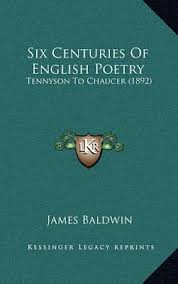Here are some materials for our Tuesday meeting:
“Ain’t I a Woman?” is the name given to a speech, delivered extemporaneously, by Sojourner Truth, (1797–1883), born into slavery in New York State. Some time after gaining her freedom in 1827, she became a well known anti-slavery speaker. Her speech was delivered at the Women’s Convention in Akron, Ohio, on May 29, 1851, and was not originally known by any title. It was briefly reported in two contemporary newspapers, and a transcript of the speech was published in the Anti-Slavery Bugle on June 21, 1853.Here is the text of the speech. I use the speech in this class because it has great examples of several of the literary devices we discuss. (See: Summer 2013 Creative Writing Videos)
The speech received wider publicity in 1863 during the American Civil War when Frances Dana Barker Gage published a different version, one which became known as Ain’t I a Woman? because of its oft-repeated question. This later version was the one recorded in most history books.
_____
VIDEO: Similes and Metaphors in Pop Music (See: Summer 2013 Creative Writing Videos).
We will also discuss the video: Pat Pattison on The Inspiration Behind Creative Writing: Poetry (See: Summer 2013 Creative Writing Videos). In it he refers to greatly inspired by Leonard Bernstein. Bernstein was an American composer, conductor, author, music lecturer, and pianist. He was among the first conductors born and educated in the United States of America to receive worldwide acclaim. According to The New York Times, he was “one of the most prodigiously talented and successful musicians in American history.” He is quite possibly the conductor whose name is best known to the public in general, especially the American public.
Pattison refers to Bernstein’s Harvard lectures:
ON a November evening in 1973, in the final moments of the sixth and last of his Norton Lectures at Harvard University, Leonard Bernstein offered what he described as a personal credo: a summation of his beliefs about music as he looked into the final quarter of the 20th century.Literary and Poetry Terminology
He was, by then, nearing the end of his tenure as the university’s Charles Eliot Norton Professor of Poetry, an interdisciplinary chair despite its title. And in the weeks leading up to that evening, he had delivered nearly 13 hours of lectures, liberally illustrated with musical examples at the piano and on projected slides as well as in a handful of luminous videotaped performances with the Boston Symphony conducted by Bernstein.
He had drawn analogies between music and linguistics, and he had traced the increasing complexity of harmonic language from Bach and Mozart to Schoenberg and Stravinsky. Now, tying up the strands of his argument, he offered what in retrospect seems a prescient prediction.
Read the full New York Times article here.
Here is a review of our terms and definitions from yesterday (Monday, 6/10/13):
TERMS:
1) figurative language
2) simile
3) metaphor
4) personification
5) hyperbole
6) alliteration
7) onomatopoeia
8) assonance
9) consonance
DEFINITIONS
1) communicates ideas beyond the ordinary, literal meaning of words
2) compares unrelated nouns, usually using the words “like” or “as”
3) an implied comparison that does not use the words like or as
4) giving human characteristics to inanimate objects, ideas, or animals
5) an exaggeration for the sake of emphasis, not to be taken literally
6) repetition of the initial letter or sound in two or more words in a line of verse
7) a word that represents or imitates natural sounds
8) the similarity or repetition of a vowel sound in two or more words
9) the repetition of final consonant sounds within a line of verse
Also, yesterday I opened class by reading the poem Annabel Lee by Edgar Allan Poe
Link: http://poestories.com/read/annabellee
_____
Meet Kioni “Popcorn” Marshall, (See: Summer 2013 Creative Writing Videos) an extraordinary 12-year-old poet from the Bronx. Despite her age, Kioni has earned the respect and admiration of the NYC poetry community by developing her own unique voice and bravely exploring mature themes like alienation, abandonment, loneliness, and abuse. Follow Kioni’s emotional journey as she prepares for her first featured performance at New York’s famed Nuyorican Poets Cafe.

No comments:
Post a Comment